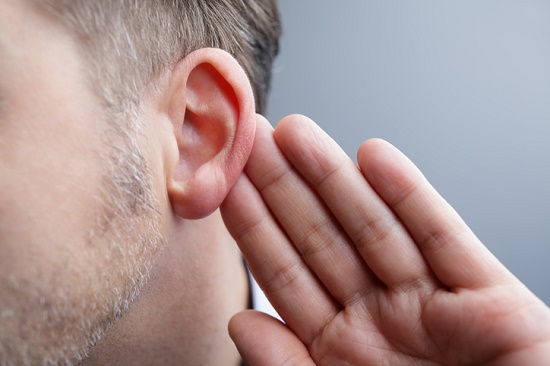
Your odds of acquiring hearing loss at some point in your life are regrettably quite high, even more so as you grow older. In the United States, 48 million people report some degree of hearing loss, including almost two-thirds of adults age 70 and older.
That’s the reason it’s critical to understand hearing loss, so that you can detect the signs and symptoms and take preventative measures to prevent damage to your hearing. In this blog post, we’re going to concentrate on the most common type of hearing loss: sensorineural hearing loss.
The three forms of hearing loss
Generally speaking, there are three forms of hearing loss:
- Conductive hearing loss
- Sensorineural hearing loss
- Mixed hearing loss (a mix of sensorineural and conductive)
Conductive hearing loss is less common and is the result of some form of obstruction in the outer or middle ear. Frequent causes of conductive hearing loss include ear infections, perforated eardrums, benign tumors, impacted earwax, and hereditary malformations of the ear.
This article will focus on sensorineural hearing loss as it is by far the most common.
Sensorineural hearing loss
This type of hearing loss is the most common and accounts for about 90 percent of all reported hearing loss. It is the result of injury to the hair cells (nerves of hearing) of the inner ear or to the nerves connecting the inner ear to the brain.
With sensorineural hearing loss, sound waves enter through the external ear, hit the eardrum, and reach the inner ear (the cochlea and hair cells) as normal. However, due to damage to the hair cells (the very small nerve cells of hearing), the sound signal that is conveyed to the brain for processing is diminished.
This weakened signal is perceived as muffled or faint and usually impacts speech more than other types of lower-pitched sounds. Additionally, unlike conductive hearing loss, sensorineural hearing loss is typically permanent and can’t be remedied with medicine or surgery.
Causes and symptoms
Sensorineural hearing loss has a number of possible causes, including:
- Genetic disorders
- Family history of hearing loss
- Meniere’s Disease or other disorders
- Head injuries
- Benign tumors
- Direct exposure to loud noise
- Aging (presbycusis)
The final two, exposure to loud noise and aging, account for the most common causes of sensorineural hearing loss, which is honestly good news because it suggests that the majority of cases of hearing loss can be avoided (you can’t prevent aging, obviously, but you can minimize the cumulative exposure to sound over the course of your lifetime).
To fully grasp the symptoms of sensorineural hearing loss, you should keep in mind that damage to the nerve cells of hearing usually happens very gradually. Therefore, the symptoms progress so slowly that it can be near impossible to notice.
A small amount of hearing loss each year will not be very noticeable to you, but after several years it will be very noticeable to your family and friends. So even though you may believe that everyone is mumbling, it may be that your hearing loss is catching up to you.
Here are some of the symptoms to look for:
- Trouble understanding speech
- Problems following conversions, particularly with more than one person
- Turning up the TV and radio volume to excessive levels
- Constantly asking other people to repeat themselves
- Perceiving muffled sounds or ringing in the ears (tinnitus)
- Becoming excessively exhausted at the end of the day
If you notice any of these symptoms, or have had people inform you that you might have hearing loss, it’s a good idea to arrange for a hearing exam. Hearing tests are fast and pain-free, and the earlier you treat your hearing loss the more hearing you’ll be able to preserve.
Prevention and treatment
Sensorineural hearing loss is largely preventable, which is great news because it is by far the most common type of hearing loss. Millions of cases of hearing loss in the United States could be eliminated by adopting some simple protective measures.
Any sound higher than 80 decibels (the volume of city traffic inside your car) can potentially harm your hearing with extended exposure.
As the decibel level increases, the amount of time of safe exposure decreases. That means at 100 decibels (the volume of a rock concert), any exposure over 15 minutes could impair your hearing.
Here are a few tips on how you can prevent hearing loss:
- Employ the 60/60 rule – when listening to a portable music player with headphones, listen for no more than 60 minutes at no more than 60 percent of the maximum volume. Also think about purchasing noise-canceling headphones, as these will require lower volumes.
- Safeguard your ears at concerts – concerts can vary from 100-120 decibels, far above the threshold of safe volume (you could damage your hearing within 15 minutes). Minimize the volume with the use of foam earplugs or with musician’s plugs that preserve the quality of the music.
- Protect your ears in the workplace – if you work in a high-volume occupation, talk to your employer about its hearing protection program.
- Protect your hearing at home – a number of household and leisure activities generate high-decibel sounds, including power saws, motorcycles, and firework displays. Always use ear protection during prolonged exposure.
If you currently have hearing loss, all hope is not lost. Hearing aids, while not able to completely restore your hearing, can dramatically improve your life. Hearing aids can enhance your conversations and relationships and can forestall any further consequences of hearing loss.
If you suspect that you might have sensorineural hearing loss, schedule your quick and simple hearing test today!
